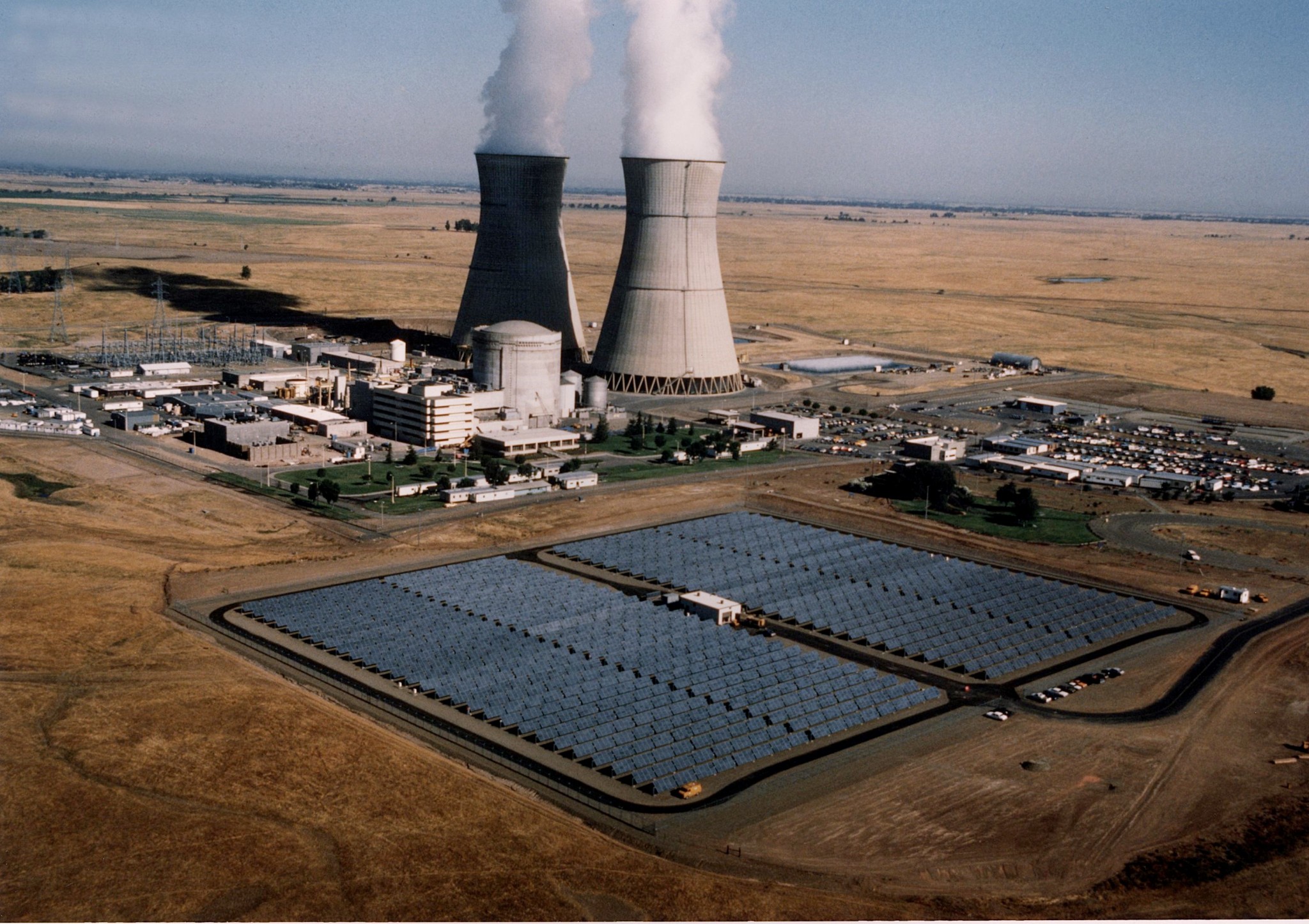 U.S. Department of Energy image of Rancho Seco Nuclear Generating Station and photovoltaic facility.
U.S. Department of Energy image of Rancho Seco Nuclear Generating Station and photovoltaic facility.
The Legislative Nuclear Reaction: An Overview of Recent Federal Efforts to Promote Nuclear Power
Recently, scientists at Lawrence Livermore National Laboratory announced that a July repeat of their nuclear fusion reaction from December produced an increased energy yield. This success has only added to the growing optimism over fusion’s future integration in the electrical grid, while interest in traditional fission power is seeing renewed support in recent years.
Both forms of nuclear energy have a future in the U.S., since low carbon energy is in high demand, as the Biden Administration set a goal of net-zero emissions in the U.S. by 2050. Financially, the benefits of transitioning to a clean energy economy could top one trillion dollars. Additionally, the Army, Air Force, and Navy climate action plans explain the need for clean energy production as a matter of national security. The combination of these factors has spotlighted the need for solar, wind, hydro, and nuclear power generation. On this stage, nuclear has emerged as a star because nuclear power plants can run for twenty-four hours seven days a week, providing energy to meet base load demands, unlike intermittent solar and wind generation.
Because of its benefits, the federal government has recognized the vital role nuclear could play in decarbonizing the economy and promoting electrification. Over the last three years, the federal government has passed support for nuclear energy development in numerous pieces of legislation with members of the House and Senate also proposing additional actions to promote nuclear energy technologies. There are five major pieces of legislation passed in the last three years that support nuclear energy development and should be highlighted:
- Infrastructure Investment and Jobs Act, 2021:
- Provides $6 billion for the Department of Energy Civil Nuclear Credit Program. This program aims to preserve the existing fleet of nuclear reactors and fund existing nuclear energy sector jobs.
- Appropriates more than $2 billion for microreactors, small modular reactors, and advanced reactors. Plus, authorizes an $3 billion in funds through 2027.
- Inflation Reduction Act, 2022:
- Allocates $700 million for research and development of high-assay low-enriched uranium for advanced reactors.
- Creates a plethora of tax credits for the nuclear industry to capitalize on. Includes credits of fifteen dollars per megawatt-hour of energy produced by existing nuclear plants, twenty-five dollars per megawatt-hour of energy produced by advanced nuclear reactors online after 2025, and investment tax credits for zero emission energy going online after 2025.
- CHIPS and Science Act, 2022:
- Research and development fund of $11 billion for applied energy.
- Supports University nuclear programs including, $390 million for new university nuclear research facilities and the construction of four new research reactors, and $55 million to maintain and upgrade existing research infrastructure.
- Allocated $900 million for isotope production and $330k for a radioisotope processing facility.
- Provides $800 million for establishment of Advanced Nuclear Technologies Federal Research, Development, and Demonstration Program.
- Notable National Defense Authorization Acts:
- Fiscal Year 2021: Nuclear Energy Leadership Act aims to re-establish U.S. leadership in nuclear energy through advanced reactor demonstrations and development of nuclear energy workforce.
- Fiscal Year 2024: Accelerating Deployment of Versatile, Advanced Nuclear for Clean Energy (ADVANCE) Act of 2023 works to reduce regulatory costs to license advance reactor technologies, creates pathways for licensing of nuclear facilities at brownfields, strengthen the fuel supply chain, and improve National Regulatory Commission efficiency.
- Consolidated Appropriations Acts:
- Consolidated Appropriations Act, 2021: $1.5 billion for nuclear energy research, development, and demonstration activities, with specific funding for the newly announced Advanced Reactors Demonstration Program.
- Consolidated Appropriations Act, 2022: $1.6 billion for nuclear energy research, development, and demonstration activities.
- Consolidated Appropriations Act, 2023: $1.8 billion for nuclear energy research, development, and demonstration activities.
Clearly, the U.S. government has made a significant investment in nuclear energy in the past three years. These pieces of legislation are not an exhaustive list of the bills or resolutions that have been passed by the House and Senate concerning nuclear energy technologies. Members of the Senate Committee on Energy and Natural Resources continue to push nuclear legislation onto the floor and have recently championed U.S. nuclear fuel production. This focus on nuclear energy is critical for the clean energy transition, as around half of the carbon-free electricity in the U.S. is generated by nuclear power.
This new legislative push could allow for the re-vitalization of the U.S. nuclear industry, which has remained stagnant in recent history. Operable nuclear power capacity in the U.S. declined from 2017 to 2022, displaying the lack of support for new nuclear combined with early retirement of facilities. However, in 2023, Southern Company’s Vogtle Unit 3 unit connected to the grid, which boosted nuclear power production. Vogtle Unit 3 was the first newly constructed nuclear unit in the U.S. in more than three decades. Southern Company is currently testing Vogtle Unit 4, which is scheduled to enter service in late 2023 or early 2024. Combined, Units 3 and 4 are expected to generate 17,200,000 megawatt-hours of clean energy and prevent ten million metric tons of carbon dioxide emissions annually.
Nuclear is critical to ensuring grid reliability while reducing emissions and transitioning to a clean energy-based economy. Federal legislation has made commendable strides in advancing nuclear power research, development, and installation in the U.S. However, more than 90 gigawatts of nuclear power may be needed to meet decarbonization goals and more legislation will be needed to develop, permit, and bring new nuclear technologies online.





